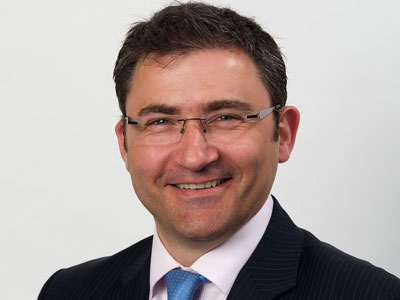
Author: Dave Marshall-George, UK Sales Manager, Condair plc
Direct and indirect evaporative cooling strategies
To evaporate 1kg of water into an atmosphere, 680W of energy is required. For steam humidifiers, this energy typically comes from the electricity or gas being used to boil the water. However, for cold water humidifiers, this energy is taken from the air in the form of heat, which results in a drop in air temperature.
So for every 1kg of water evaporated into an atmosphere, 680W of evaporative cooling is achieved.
As well as increasing humidity, a large commercial cold water humidifier delivering 1,000kg of moisture per hour to an atmosphere is providing 680kW of evaporative cooling. As some humidifiers can do this while operating on less than 0.3kW of electricity, their potential for delivering low energy, low cost cooling is substantial.
So how can this potential be realised in a modern building services HVAC system?
In-duct direct evaporative cooling
This is the most common form of evaporative cooling strategy used in air handling units. The humidifier adds water to the incoming air stream, raising its humidity and reducing its temperature. This conditioned air is then simply supplied to the room with a high percentage of the room air being exhausted rather than re-circulated to maintain a low humidity in the room.
The advantage of this strategy is that 100% of the cooling effect is felt by the room. A disadvantage is that the amount of cooling that can be achieved using direct evaporative cooling is dependent on the supply condition of the incoming air. Air that has a high level of humidity already will not be able to absorb much moisture, so will not be subject to the cooling effect of the humidifier.
Exhaust air evaporative cooling
This strategy uses the exhaust air in combination with a heat recovery unit to pre-treat the supply air prior to it being introduced to the room. When the air is extracted from the room, it is typically warmer than the incoming air and unsuitable for use in cooling it.
However, by humidifying this air, and economically reducing its temperature below that of the incoming air, it can be run through a heat recovery unit and its cool thermal energy transferred to the incoming air.
During the summer months, this can reduce the temperature of the incoming air by several degrees and lower the need for additional DX cooling, thus reducing a HVAC system’s energy costs. During the winter months, the warm exhaust air can be used without the humidifier to pre-heat the incoming air, thus reducing heating costs.
As there is no mixing of the humidified exhaust air and the incoming fresh air, there is no moisture added to the incoming air, so cooling occurs irrespective of the incoming air’s humidity level.
This type of evaporative cooling solution is now being incorporated into packaged AHUs, such as Air Handling System’s OptEvent unit, as used in Great Ormond Street Hospital.
In-direct evaporative cooling
This strategy uses the outside air to cool an internal environment, without allowing external and internal airstreams to directly mix. Cool outside air is drawn through a heat recovery unit then immediately exhausted, while internal air is drawn from the room and circulated through the heat recovery unit before being re-introduced to the room. The outside air’s cool thermal energy is thus transferred to the internal air via the heat recovery unit without the two streams directly mixing.
By humidifying the outside air prior to it entering the heat recovery unit, its temperature is economically reduced and even more low cost cooling is applied to the internal atmosphere. This enhances the capacity of the system and makes it effective even during periods when the outside temperature is warmer than the desired internal room condition.
As the internal air never mixes with the outside air, there is a reduced possibility of the internal atmosphere being compromised by external pollutants so this is an ideal strategy for critical environments. It also allows the velocity of the outside air stream through the heat recovery unit to be much greater than the internally circulating air, thus “scavenging” even greater levels of cooling from the system.
Direct air evaporative cooling
For buildings and areas that do not have a central air conditioning system, direct air evaporative cooling can be a very economical and achievable way to reduce the temperature. Spray humidifiers deliver moisture to an atmosphere using either high pressure or compressed air to ensure evaporation. Strategically located throughout the space, spray nozzles deliver cooling at a fraction of the cost of traditional DX air conditioning.As with in-duct direct evaporative cooling, the amount of cooling achieved is dependent on the humidity levels of the area, as a high humidity will prevent further moisture being absorbed and its resultant cooling effect. This strategy is best employed within an area that has very active ventilation and a high level of air exchange to keep the ambient humidity low enough to continually absorb moisture.
It can be used internally or externally, as was the case when Condair created the world’s largest evaporative cooling system around the Prophet’s Mosque in Medina, Saudi Arabia. Across the 15 hectare site, sprays release up to 50,000 litres of moisture per hour, providing 34,000kW of evaporative cooling to the desert air and reducing its temperature by up to 10°C.
















